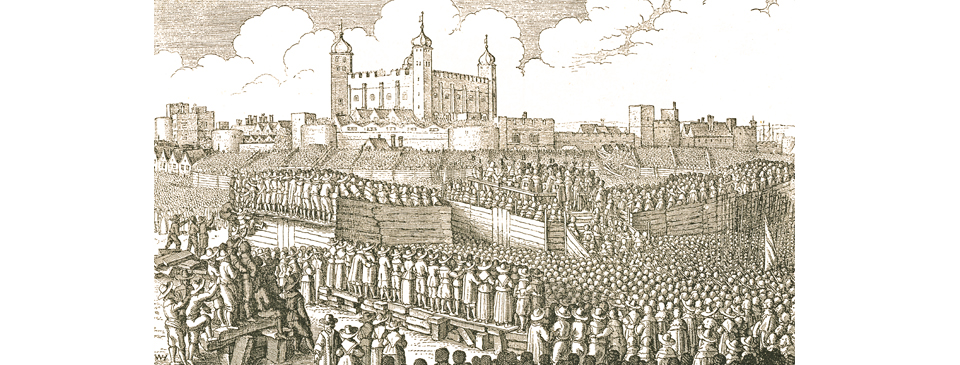Towards Civil War

The execution of Thomas Wentworth, Earl of Strafford on Tower Hill in May 1641. His loyalty to the King made him unpopular with radicals. Parliament attempted to impeach him but failed due to lack of evidence of treason. However, Charles was under pressure from Parliament and therefore signed his death warrant despite his earlier reassurances that no harm would come to Strafford. The picture was drawn by the artist Wenceslaus Hollar who was a witness to the event.
The attempted arrests were a fatal mistake and the armed violation of Parliament turned many against Charles. He could no longer dissolve Parliament due to the passing of the Triennial Act. Fearing reprisals, on 10th January the King fled Whitehall by barge, together with Henrietta Maria, the twelve-year-old Charles (the future Charles II), and ten-year-old niece Mary. They arrived at Hampton Court without warning and spent the first night huddled together because the royal apartments had not been heated. The other royal children, James, Elizabeth and Henry, remained at St. James’s Palace. Henrietta Maria and Princess Mary subsequently left for safety in the Netherlands.
The five MPs came out of hiding in London and travelled to Westminster by boat in triumph. The King moved on to Greenwich where he was joined by Prince Charles. From there the King and his son travelled north to raise an army. Archbishop Laud remained incarcerated in the Tower of London until 1644 when he was brought to trial by Parliament and sentenced to death. He was beheaded on Tower Hill in January 1645.
Sources include: Robin Rowles ‘The Civil War in London’; Barry Coward ‘The Stuart Age’; Sir Walter Besant ‘London in the Time of the Stuarts’ (1903); Lisa Jardine ‘On A Grander Scale’; John Richardson ‘Annals of London’; Susan Foreman ‘From Palace to Power’; John Field ‘Kingdom Power & Glory’; Thomas Cussans ‘Kings & Queens of the British Isles’; Robert Brenner ‘Merchants and Revolution’; L.H. Roper ‘Advancing Empire’.
Forward to London during the English Civil War >


